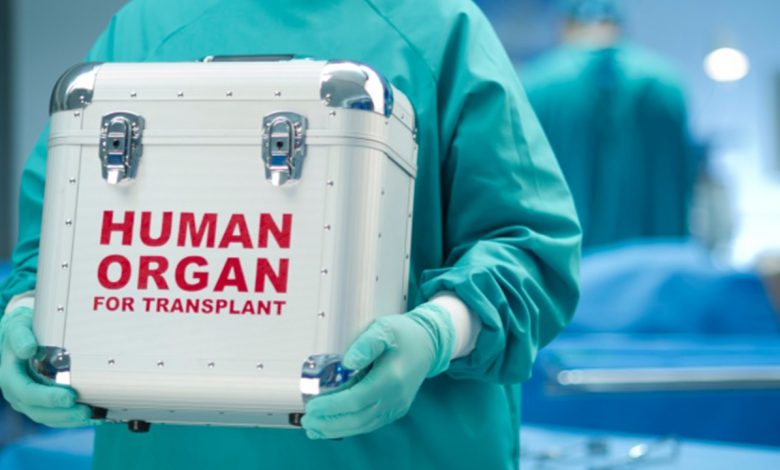Organ Transplant Rules in India – Significance and Issues
[GS Paper 2 - Health and Education]

Context – The changes to the organ transplant rules announced by the Union Health Ministry last week, are small, but significant, steps towards giving a new lease of life to many people with failing organs.
Despite performing the third-the greatest number of transplants in the world, only about 0.01 percent of Indians donate their organs after death, according to the World Health Organization.
New Changes Introduced
- No Age Ceiling for Organ Receivers – With the new changes, patients who are 65 years and older can now register for receiving organs from a deceased donor. Now an individual of any age can register for organ transplant.
- Previously, the upper age limit for registering patients requiring organs from deceased donors was 65 years, but this ceiling has now been removed.
- No Domicile Criteria for Receivers – Eliminate the domicile criteria for registering to receive organs, so that patients in need can register in any state.
- Currently, certain states restrict registration for deceased organ donors to only those who are domiciled in the state or give them preference. Organs harvested in one state are first shared with other hospitals within the same state, then in the region and then shared nationally on the occasion that no match was found.
- No Registration Fees –The ministry has also requested that states not impose any fees on patients seeking registration for organ transplantation, as it violates the 2014 Transplantation of Human Organs and Tissues Rules.
- Previously, States such as Maharashtra, Kerala, Gujarat, and Telangana charge between Rs 5,000 and Rs 10,000 to register patients who need an organ replacement. The health ministry has rightly directed these states to stop charging this fee.
Status of India in terms of Organ Transplant
- Third Highest number of transplants in the world – India conducts the third highest number of transplants in the world every year. Yet barely four per cent of the patients who require a liver, heart or kidney transplant manage to get one.
- Organ transplants have significantly increased over the past decade – According to the latest available official data, the number of organ transplants has significantly increased over the past decade. In 2013, there were 4,990 organ transplants, whereas in 2022, there were 15,561, a jump of 211 percent.
- Kidney transplants – Specifically, the number of kidney transplants from living donors increased by approximately 181 percent from 3,495 in 2013 to 9,834 in 2022. The number of kidney transplants from deceased donors increased by approximately 193 percent from 542 in 2013 to 1,589 in 2022.
- Liver transplants – The total number of liver transplants from living donors increased by approximately 350 percent from 658 in 2013 to 2,957 in 2022, and from deceased donors, it increased by approximately 217 percent from 240 in 2013 to 761 in 2022. Deceased donors account for nearly 17 percent of all transplants in India.
- Heart and Lung transplants – The total number of heart transplants increased by approximately 733 percent from 30 in 2013 to 250 in 2022, while lung transplants increased by approximately 500 percent from 23 to 138.
- Government hospitals fall behind – Furthermore, private hospitals lead in organ transplants while numbers in government hospitals remain relatively low, sources said.
Challenges to Organ Donation in India
- Lack of awareness – There is a lack of awareness among the general public about the importance of organ donation, the legal framework governing it, and the procedures involved. This can limit the number of potential donors.
- Cultural beliefs and superstitions – In India, there are several cultural beliefs and superstitions that discourage organ donation. Some people believe that organ donation is against religious beliefs, or that it can impact the soul or afterlife.
- Lack of infrastructure – India faces a shortage of hospitals and medical facilities that are equipped to handle organ transplantation. This can limit the availability of organs for transplantation.
- Regulatory bottlenecks – While the legal framework exists, there is a lack of implementation and enforcement of the law. This can lead to issues such as organ trafficking and black-market activities.
About NOTTO
- NOTTO stands for National Organ and Tissue Transplant Organization. It is a national level organization set up under the Director General of Health Services, Ministry of Health and Family Welfare.
- It has the following two divisions –
- National Human Organ and Tissue Removal and Storage Network – It functions as the apex Centre for all India activities of coordination and networking for procurement and distribution of Organs and Tissues.
- National Biomaterial Centre – The main thrust and objective of establishing the center is to fill up the gap between ‘Demand’ and ‘Supply’ as well as ‘Quality Assurance’ in the availability of various tissues.
Conclusion
The percentages are very likely to go up once the changes in the rules announced last week take effect. The organ shortage problem is, however, a complex one, that continues to confound planners, even in nations whose healthcare systems are far better equipped than that of India’s.
There is a need to expand the number of institutions where surgeries and transplants are undertaken. A uniform policy will help patients in seeking transplant from deceased donors at any hospital in the country, giving them a lot of flexibility.







.png)



